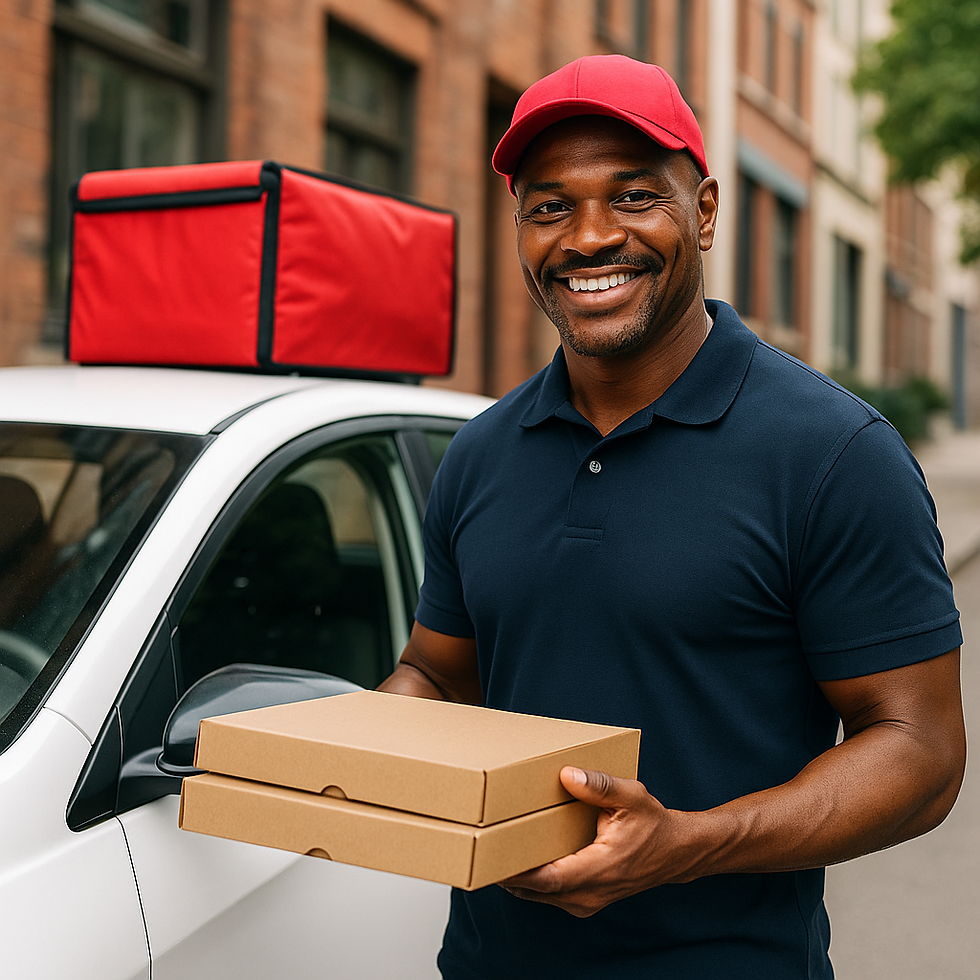Delivering on Your Own Terms: A Guide to Starting In-House Delivery
- Ronnie Codman

- Aug 6
- 4 min read

If you're thinking about offering deliveries in-house, you're not alone. As delivery becomes an expectation for many food businesses, more independent takeaways and restaurants are starting to question their reliance on third-party platforms, and exploring smarter, more profitable ways to do things themselves.
The good news? Doing your own deliveries isn’t what it was 30 years ago. You don’t need to hire five drivers and leaflet the entire town overnight. In fact, the best approach is often the slowest: start small, build a loyal customer base, and scale as demand grows.
Here’s what to consider when launching delivery yourself, and how to do it right.
Why Deliver Yourself?
Taking control of your delivery operation offers three major benefits:
Independence from food portals
You’re no longer at the mercy of rising commission fees, shifting algorithms, or losing brand recognition to platforms like Just Eat or Uber Eats.
Access to a wider customer base
You’re no longer limited to foot traffic. Customers who might never pass your shop can become loyal regulars with the option to order straight from you.
Better margins
By keeping orders on your own system, you avoid platform fees, control delivery charges, and retain more profit per order, especially if you implement smart pricing strategies.
Start Small, Win Big
Don’t Try to Be a Hero Overnight
Delivery is a skill. Start simple:
Cap your orders (e.g. limit delivery to one order every 15 minutes)
Build staff routines around packaging and hand-offs
Let your team settle into the new workflow
Monitor delivery feedback and fine-tune routes or timing
Growth should feel smooth, not overly stressful.
Use Collection to Build a Base
Counterintuitively, one of the best ways to start your delivery service is by taking collection orders through your own online ordering system. It is the perfect stepping stone to delivery:
You can build customer habits around your own platform without the complexity of managing drivers or delivery zones. Customers will naturally see your delivery offer when using the app/website to process their normal order.
Offer price advantages to make ordering directly from you a no-brainer.
Use email and SMS campaigns to stay in touch with customers and keep them coming back.
Once the demand is consistent, you can flip the switch on delivery with confidence.
A stable collection base becomes the foundation for sustainable delivery growth. See how other takeaways have done it with our help: Client Showcase
Tips & Tricks for Smarter Delivery
Set Your Boundaries: Delivery Radius & Charges
You don’t need to cover a 10-mile radius from day one. In fact, that’s a fast way to lose money and risk late deliveries.
Start small - usually 1 to 2 miles is ideal - and expand gradually. A good ordering system should support:
Tiered delivery zones (e.g., £1.50 within 1 mile, £3 within 2 miles)
Postcode-based delivery pricing
Custom zones with flexible delivery charges for high-traffic areas
This allows you to cover fuel, driver time, and wages, while keeping delivery fast and consistent for customers. Once you have an idea of order numbers, it becomes a lot easier to calculate what you will take in delivery fees and thus what you can pay your drivers.
Covering Costs Without Losing Orders
You’ve got two effective pricing strategies:
Add a clear delivery fee at checkout
Create a slightly higher-priced delivery menu (e.g. 50p–£1 more per item)
Customers are used to paying more on platforms like Just Eat - as long as you're transparent, many will happily pay to support you directly, and still save significantly compared to third-party pricing.
Batch Deliveries to Maximise Efficiency
One of the most powerful tools in your delivery strategy is postcode batching: grouping orders by area so one driver can handle multiple deliveries in a single run.
This technique:
Reduces delivery time for customers further afield
Lowers fuel and driver costs per order
Keeps food hotter and fresher on arrival
This is often done by using a soft delay: holding an order back by 3–10 minutes to pair it with another going to the same area. This is what many well-known food brands are doing behind the scenes.
Keeping Drivers Happy
Your pay model should be in line with your order volume. Common pay structures include:
Per drop: Flexible and low-risk
Hourly: Better for busy periods or consistent demand
Hybrid: A base wage + performance bonuses
Most successful shops use a hybrid method, allowing them to remunerate drivers for extra mileage, whilst ensuring that they pay according to demand. Note that delivery drivers must have hire & reward insurance. There are plenty of temporary cover options that are ideal for part-time drivers.
Delivery That Grows With You
When done right, delivery is more than a convenience: it’s a revenue driver that keeps customers coming back. But it only works if it’s built on the right systems, boundaries, and strategy.
Start with what you can manage. Use your own pricing to compete. Grow the offering once the customer base is in place.
Want help launching delivery in your shop?
Fill in the form below and a member of our expert team will be in touch.
